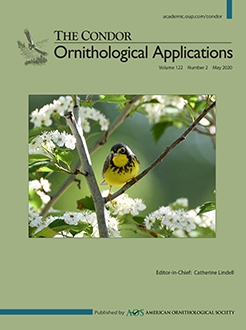Forest fragmentation is a leading driver of biodiversity loss, yet its effects on positive species interactions remain poorly known. We examined the effects of fragmentation on mixed-species bird flocks in the Western Andes of Colombia. Using 500-m transect surveys (n = 14 transects), we sampled flocks in 8 fragments (range: 10–173 ha) and an unfragmented reference site within the same altitudinal band (1,900–2,200 m.a.s.l.) and matrix type (cattle pasture). We evaluated the relative contributions of 9 predictor variables, including patch size, distance from edge, and selective aspects of vegetation structure on the composition, size, species richness, functional diversity, and phylogenetic diversity of flocks. We found effects of both patch size and vegetation structure on flock species richness, size, and functional diversity, but no support for edge effects. Generally, flock richness and size responded differently to fragmentation than did functional and phylogenetic diversity metrics. Both flock size and richness increased with patch size, but this variable had no effect on functional and phylogenetic diversity. Flock richness and size increased in high-canopy forests with greater foliage height diversity, whereas unlogged, old-growth primary forests with large-diameter trees had lower flock richness and size, but significantly greater functional diversity. Phylogenetic diversity was not affected by patch size, edge effects, or vegetation structure. We found differences in flock composition in response to fragmentation. Richness of Furnariidae in flocks increased with increasing distance from edge and foliage height diversity, whereas that of Thraupidae and boreal migrant species increased in early successional and forest edge flocks, respectively. All flock diversity metrics differed significantly seasonally, with smaller, less diverse flocks observed in January–March than in June–August. Flocking behavior persisted in 10-ha fragments, likely because Andean flocks are ″open membership” in nature, but there was extensive species turnover as forest edge and generalist species replaced forest-interior species in smaller fragments.
How to translate text using browser tools
11 March 2020
Patch size and vegetation structure drive changes to mixed-species flock diversity and composition across a gradient of fragment sizes in the Western Andes of Colombia
Harrison H. Jones,
Scott K. Robinson
ACCESS THE FULL ARTICLE

The Condor
Vol. 122 • No. 2
May 2020
Vol. 122 • No. 2
May 2020
forest fragmentation
functional diversity
positive species interaction
species turnover
suboscine
vegetation structure





